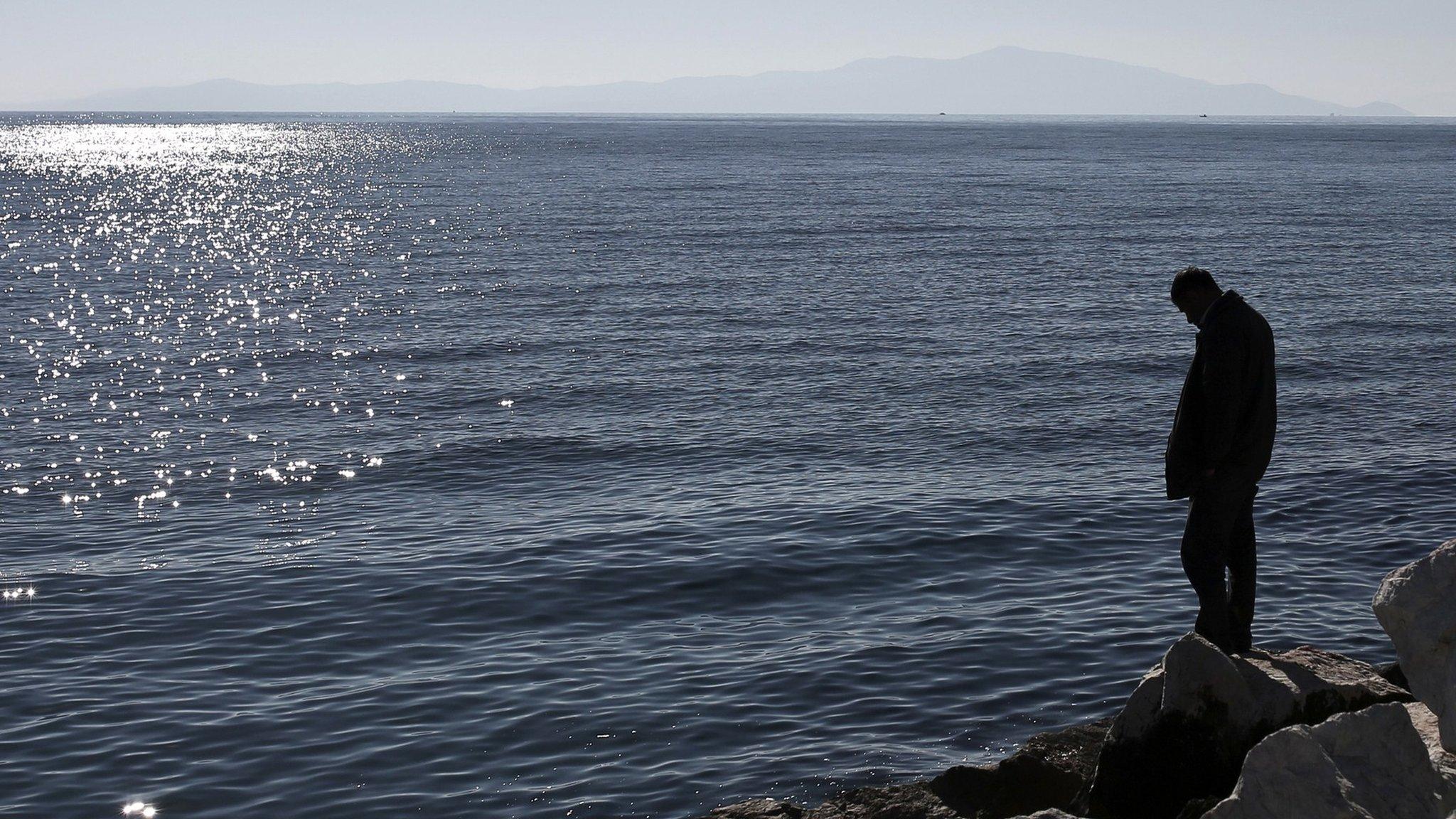What's happening in Syria?
- Published
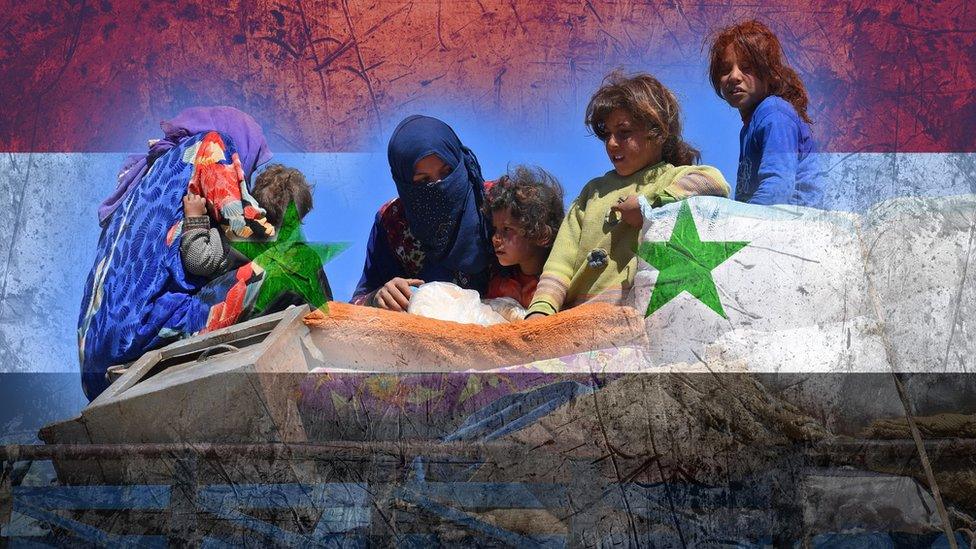
There's been a civil war in Syria for the last seven years, with different groups trying to seize control of the country.
The fighting is between:
Soldiers who support the Syrian president Bashar al-Assad
Fighters known as rebels, who don't want Assad to be in power anymore
The group that calls itself Islamic State (IS)
In the chaos of fighting between the government and anti-government fighters, IS took over large parts of Iraq and then moved into eastern Syria, where they were able to gain land and power. Even though IS has since lost control of a lot of this land, fighting continues in the country.
The situation is also more complicated because other countries have got involved in the conflict.
The Syrian government's key supporters are Russia and Iran, while the US, Turkey and Saudi Arabia back the rebels. The UK, France and other western countries have also provided varying levels of support to what they consider to be "moderate" rebels.
The situation in Syria explained
According to the United Nations (UN) - a group of countries working together to try to bring peace - at least 6.1 million ordinary people have had to flee their homes inside Syria, while another 5.6 million have fled abroad.

What is the latest?
On 14th April, armed forces from the UK, the US and France have fired missiles to destroy what they say are chemical weapons factories in Syria.
It's the biggest military attack against Syria's President Bashar al-Assad's government by western powers in Syria's civil war.
President Trump said "The purpose of our actions tonight is to establish a strong deterrent against the production, spread, and use of chemical weapons,"
UK Prime Minister Theresa May said the Syrian regime had demonstrated a "persistent pattern of behaviour" when it came to the use of chemical weapons, and that "must be stopped".
However, many people don't agree that military strikes are the best approach and feel that the Prime Minister should have asked Members of Parliament to agree to action before it was taken.

Prime Minister Theresa May and US President Donald Trump have agreed to "keep working closely"
The air strikes come after claims of a chemical attack in an area called Douma which shocked a lot of people.
Douma is the last town under the control of the rebels in Syria's region of Eastern Ghouta.
Dozens of people are reported to have died in the attack, although the exact number is not known.
Syria has said that the chemical attack is a "fabrication" - as has its main ally, Russia.
The Syrian government has repeatedly denied ever having used chemical weapons.
What are chemical weapons? (April 2017)
The Organisation for the Prohibition of Chemical Weapons (OPCW) says experts are travelling to Syria to start investigations into the suspected chemical attack on Saturday, to try to find out more about exactly what happened.
But Russia had warned that if air strikes were launches, it would respond and the World is waiting to see what will happen next.
But where did the conflict in Syria come from in the first place?

Why did the fighting in Syria first begin?
Even before the conflict began in Syria, many Syrians were complaining about high unemployment, officials not behaving as they should do, and a lack of political freedom under their President Bashar al-Assad.
However, the event which caused the situation to escalate into a full-blown civil war dates back to 2011, to the Syrian city of Deraa.
Local people decided to protest after 15 schoolchildren were arrested - and reportedly tortured - for writing anti-government graffiti on a wall.
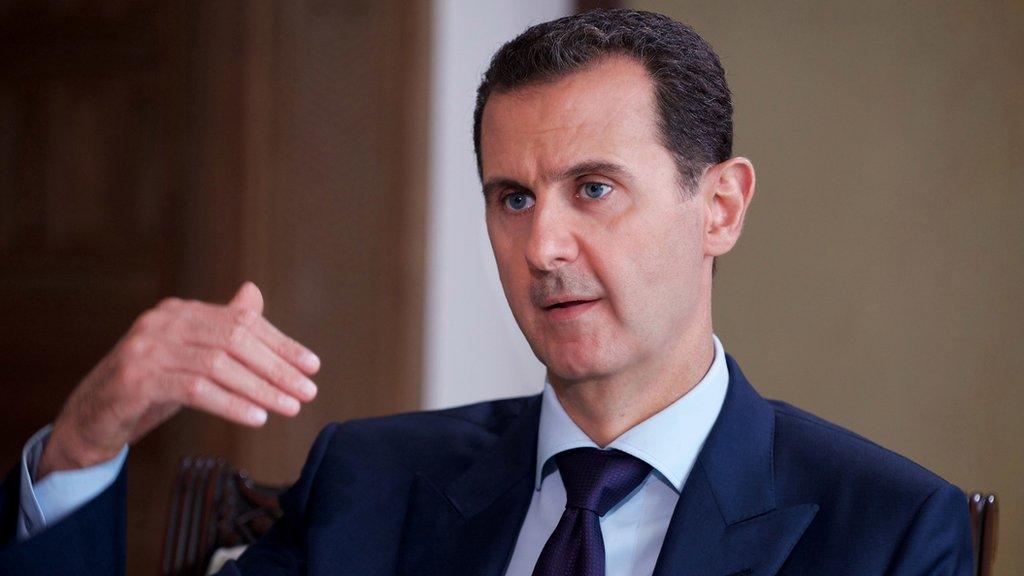
This is the Syrian President Bashar al-Assad
The protests were peaceful to begin with, calling for the release of the children, democracy and greater freedom for people in the country.
The government responded angrily and, on 18 March 2011, the army opened fire on protesters, killing four people. The following day, they shot at mourners at the victims' funerals, killing another person.
People were shocked and angry at what had happened and soon the unrest spread to other parts of the country.

Syrians walk through the rubble
At first, the protesters just wanted democracy and greater freedom.
But after government forces opened fire on peaceful demonstrations, people demanded that President Bashar al-Assad resign. However, he refused to do this which made the protesters extremely angry.
President Assad still had a lot of people in Syria that supported him and his government, so they began to fight against people who were against the government.
In July 2012, the International Red Cross said the violence in Syria had become so widespread that it was in a state of civil war.

Who are the rebel fighters?
The war is being fought between two sides within the same country - this means it is called a civil war
There isn't one single group of people fighting against President Assad and the government's army.
The group who want the president to step down - called the opposition - is made up of several kinds of people. These include groups of rebel fighters, political parties who disagree with Assad, and those living in exile who cannot return to the country.
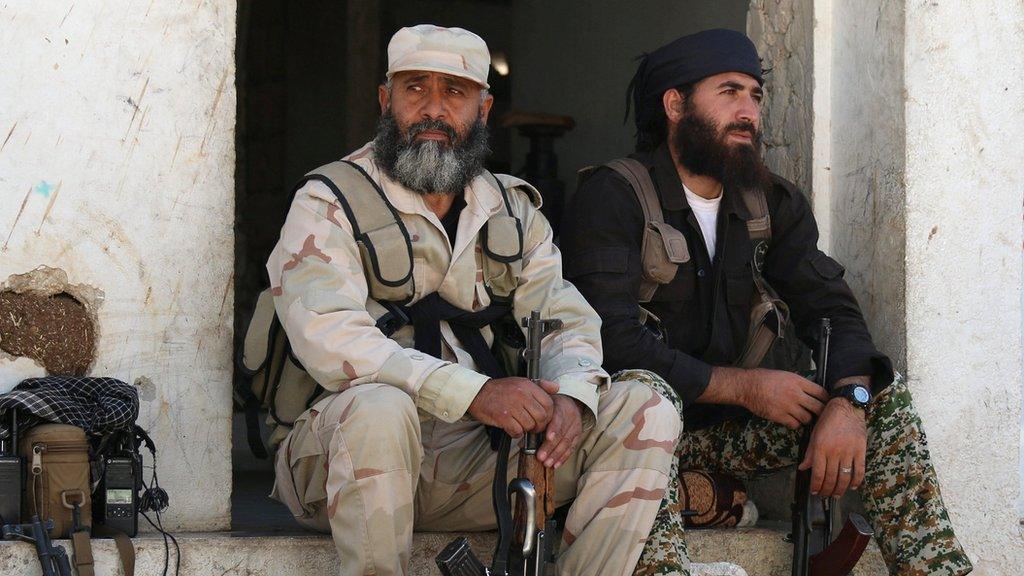
Rebel fighters taking a rest
It is thought there could have been as many as 1,000 different groups opposing the government since the conflict began, with an estimated 100,000 fighters.

How did Islamic State become involved?
It wasn't long before the crisis in Syria became more than just a war between people who are for or against President Assad.
In 2011, the group calling Islamic State (IS) joined the rebellion against President Bashar al-Assad in Syria, where it found a safe haven and easy access to weapons.
IS is a militant group with extreme, violent views, which has used this violence against anyone who doesn't agree with what they think. They have also persecuted other groups, including Christians and Yazidis.
In 2014, the group began to take over large areas of a country called Iraq, next door to Syria. Then, they moved into eastern Syria and - in the chaos of the war - they were able to gain land and power there too.
Raqqa was the first big city captured by IS in Syria in early 2014. The group went on take over large parts of the country towards Aleppo in the north, and along the Turkish border.
What is the group that calls itself Islamic State?
Both Assad's forces and the rebels have been fighting a separate battle against IS at the same time as fighting each other.
To try to stop IS, in September 2014 the US used planes to attack IS fighters in Iraq. These attacks are known as airstrikes.
Just over a year later, UK MPs voted in favour of military action against IS in Syria too. The first airstrikes were carried out by RAF Tornado jets within hours of the vote in the House of Commons.
IS has since lost control of most of the land it had captured.
Towards the end of 2017, Syrian Kurdish and Arab fighters joined together - backed by America - to take back the city of Raqqa in the north-west. This ended three years of rule by IS who had made Raqqa its headquarters.
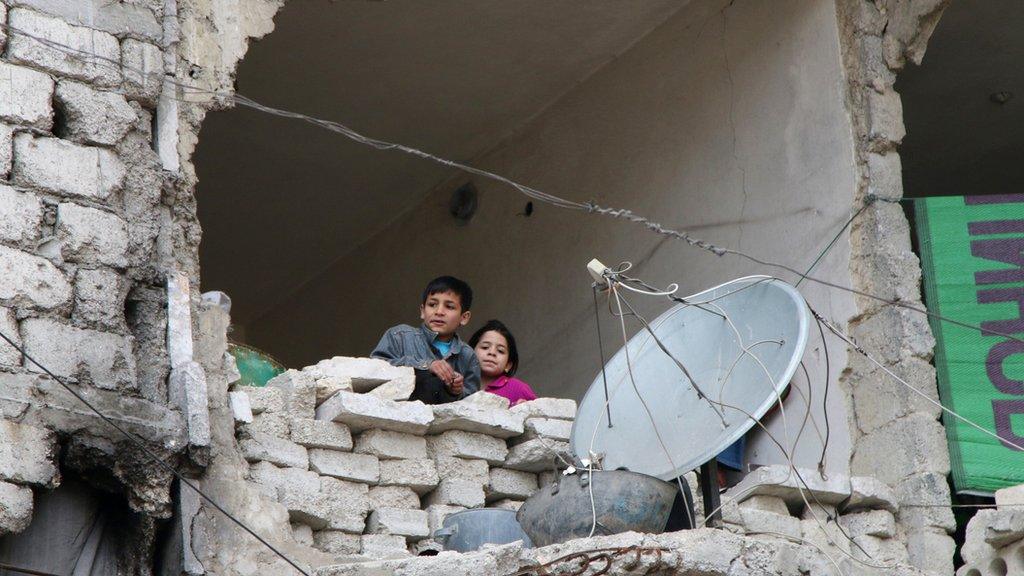
These children are looking out from a destroyed home in Aleppo - a city in Syria
Following this, Syrian state TV - controlled by President Assad's government - said the Syrian army had retaken the city of Deir al-Zour, the largest city in eastern Syria. The Syrian Observatory for Human Rights, a UK-based activist group, said government forces had taken control of the city after weeks of fighting.
This was the last major stronghold of IS in Syria, which showed how much IS had lost the control it once had. The city had been very important to IS because of it is close to the border with Iraq.
But there was still some disagreement over whether IS had been cleared from the area completely. Syrian state TV reported that the city was completely free from terrorism, while other reports said the Syrian army and its allies were still clearing IS fighters from the area.
IS still has control of small pockets of land in Syria.

What has been the impact of the war on people living in Syria?
Millions of ordinary people living in Syria have had to escape from their homes to find somewhere safer to live.
According to the United Nations (UN), a group that works to try to solve some of the world's problems, almost five million Syrians have had to leave the country. Many have gone to neighbouring countries, like Jordan, Lebanon, Turkey or Iraq.
Six million more people have tried to find safety elsewhere in Syria.
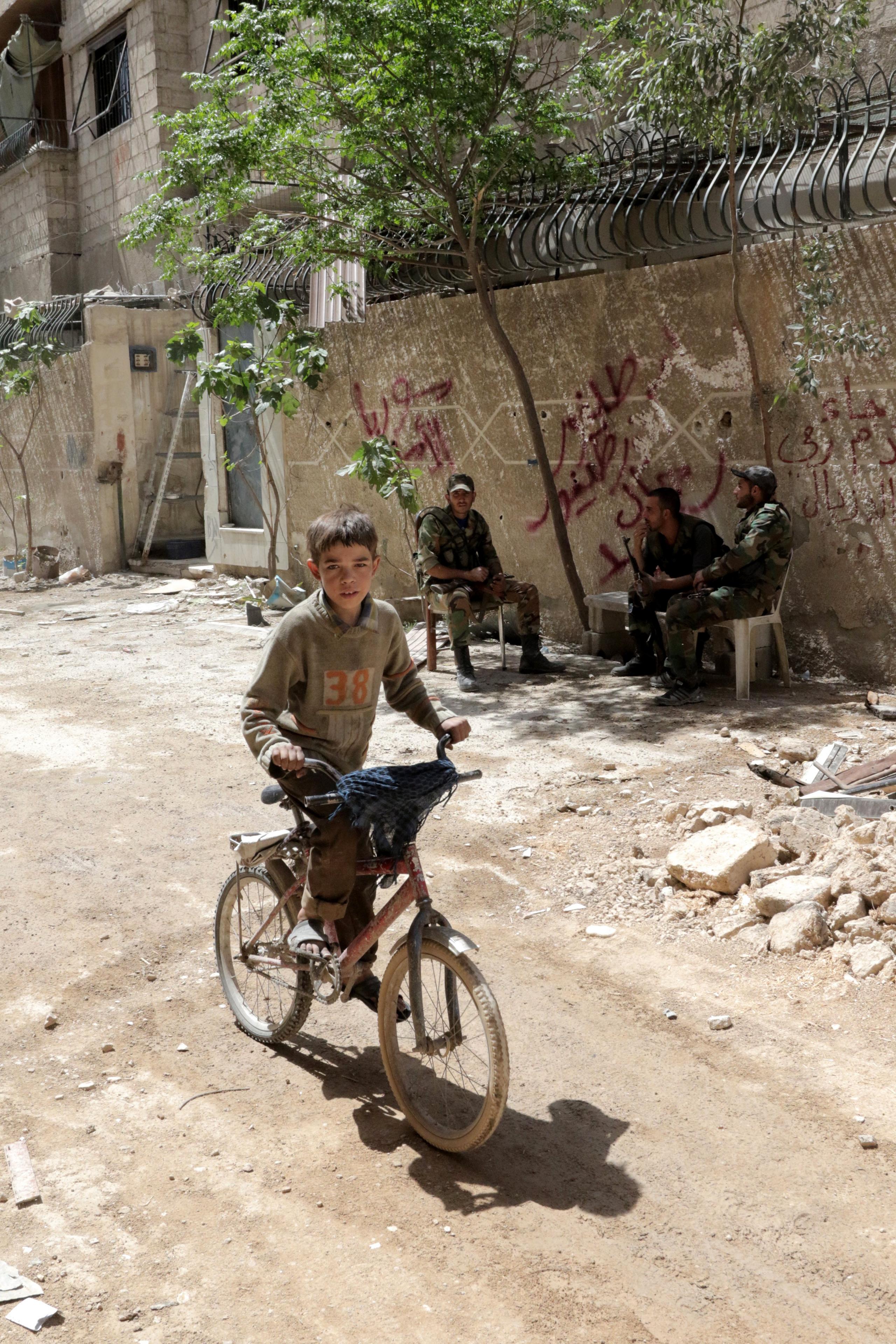
Here, Syrian soldiers sit in the shade as a boy rides a bicycle in a town in Eastern Ghouta
The Syrian Observatory for Human Rights have recorded that around 354,000 people have lost their lives, including 106,000 ordinary people who aren't even soldiers or meant to be involved in the fighting. This figure doesn't include people who are missing or who aren't recorded though, so the actual number is thought to be much higher.
Lots of children can no longer go to school because their schools have been destroyed or there are no teachers where they have moved to.
Turkey and Lebanon have each taken in more than one million Syrians, while Jordan, Iraq and Egypt have become home to hundreds of thousands more.
Syrian kids talk about their lives
When people are forced to leave the country where they live like this, they become known as refugees. The conflict in Syria has caused one of the largest refugee movements in recent history.
Many refugees made the decision to try to reach Europe. This is because some countries in Europe said they would accept refugees who wanted to start a new life here.
From Syria to Sweden - Kava's story
Millions of people both inside and outside Syria are in desperate need of help, but aid agencies say that getting help to people inside the country is very difficult and dangerous.

What else do we need to know about this war?
One other topic that has been talked about a lot is the use of chemical weapons.
There is an international law which bans countries from using chemical weapons in wars, as they are deemed too cruel to use on other people.
However, in August 2013, it was reported that they were used in the war in Syria, which caused anger around the world. Both the rebels and the Syrian government denied that they were responsible.
MPs in Westminster voted against responding to this with military action in Syria. But the US and French governments discussed limited missile strikes against military targets.
In September 2013, Russia and the US reached an agreement which said the Syrian government should give up its chemical weapons and destroy them so they can never again be used. This was important as Russia and the US support different sides in the Syrian war.
The process of destroying the weapons began in October 2013 and the people working on this project were awarded the Nobel Peace Prize later that month.
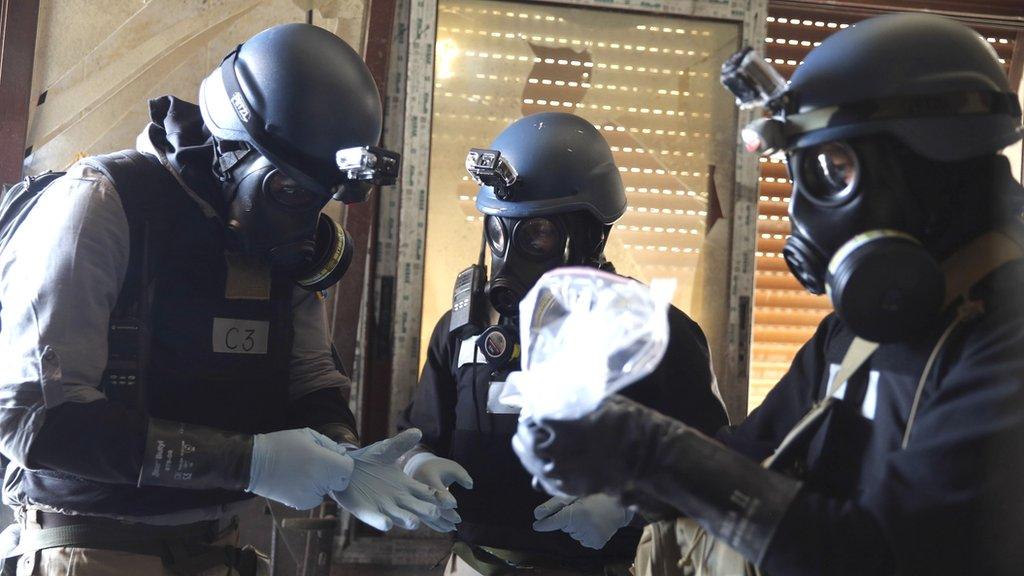
UN chemical weapons inspectors in Syria
But in April 2017, there was reportedly another chemical weapons attack on a town in north-west Syria, which killed and injured many people.
At the time, many weapons experts, the UK and other countries, and US President Donald Trump said President Assad's government was to blame for the attack.
But the Syrian President said he didn't do it and Russia, which supports him, said it was the result of aircraft hitting chemical weapons on the ground, which belonged to the rebels.
The US responded with military action by carrying out missile attacks on Syria, which the UK said it supported.
Now, chemical weapons and Syria are in the news again after the suspected chemical weapons attack in Douma in April 2018.
An investigation is trying to find out what happened but President Trump has tweeted angry words warning of military action by the US against Syria.

So what next for Syria?
It doesn't look like the fighting is likely to end any time soon, as there is still a big power struggle going on in the region.
There is a stalemate between the two sides. This means that the government forces and the rebel groups are unable to defeat each other or agree on the future.
Watch Newsround's report
The country is being destroyed by the conflict, including a lot of its rich cultural heritage. All six of the country's six Unesco World Heritage sites have been significantly damaged.
Lots of countries are trying to continue to supply aid, such as food and emergency supplies.
The UN has said that it believes 13.1 million people will need some form of humanitarian help in Syria in 2018. But it is difficult when almost 3 million Syrians live in areas which are very difficult for aid workers to get to.
The rest of the world will continue to try to work out if there is a way to help Syria achieve peace. But for the time being, the conflict continues.
If you're upset by this story, or anything in the news, click here for advice.
- Published16 April 2018
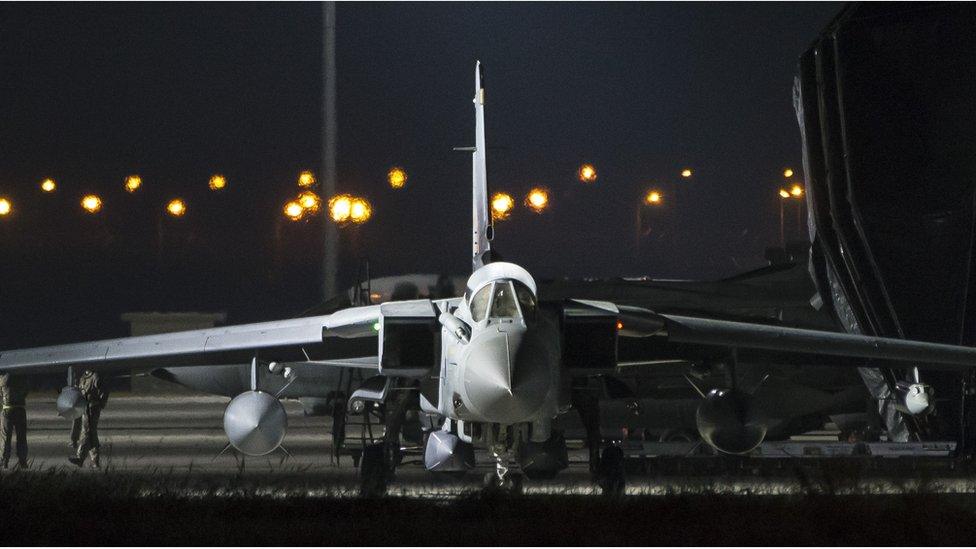
- Published18 February 2015
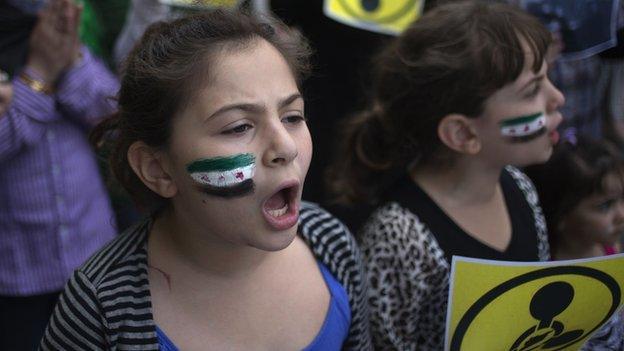
- Published3 January 2017
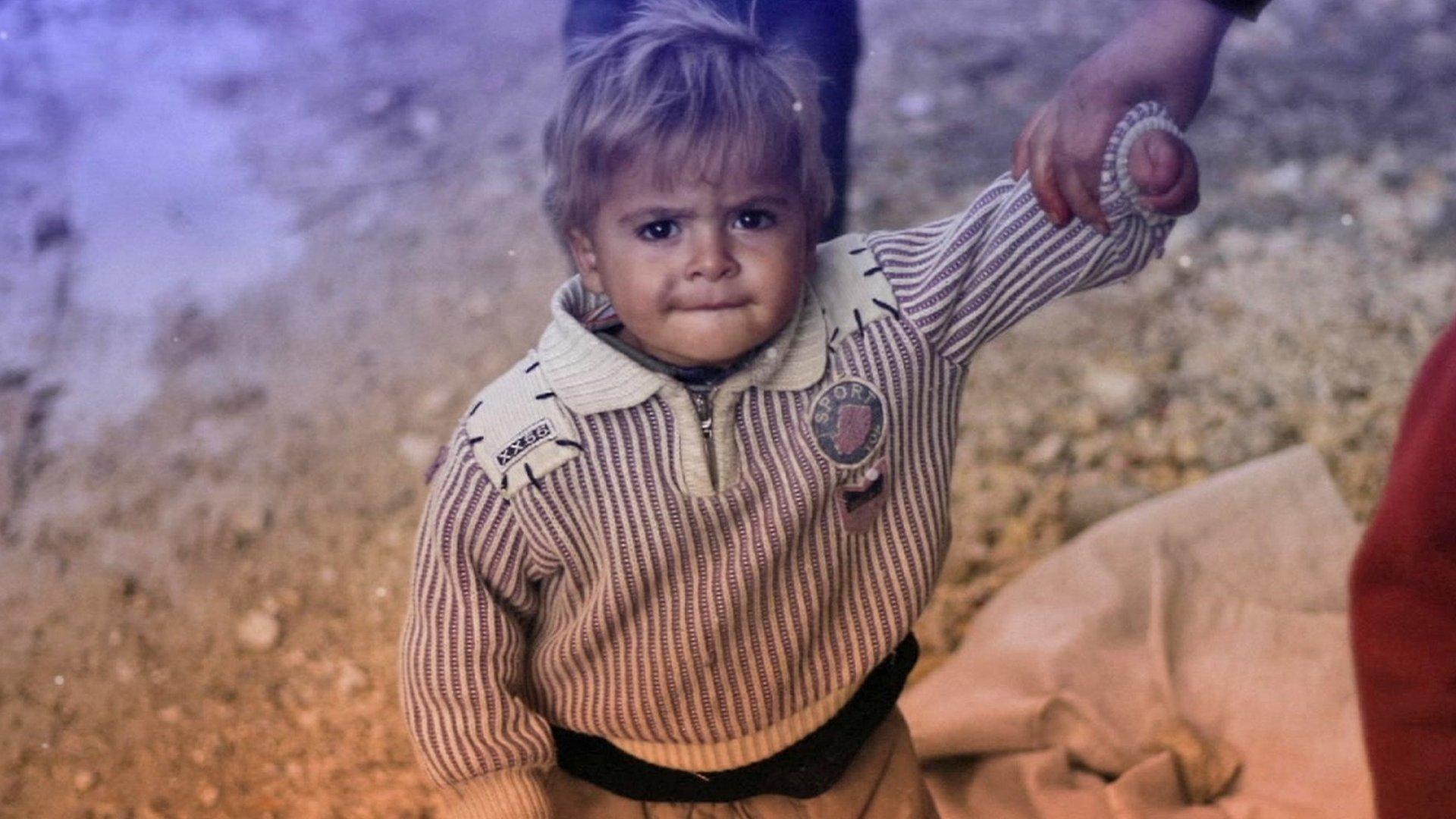
- Published16 September 2015
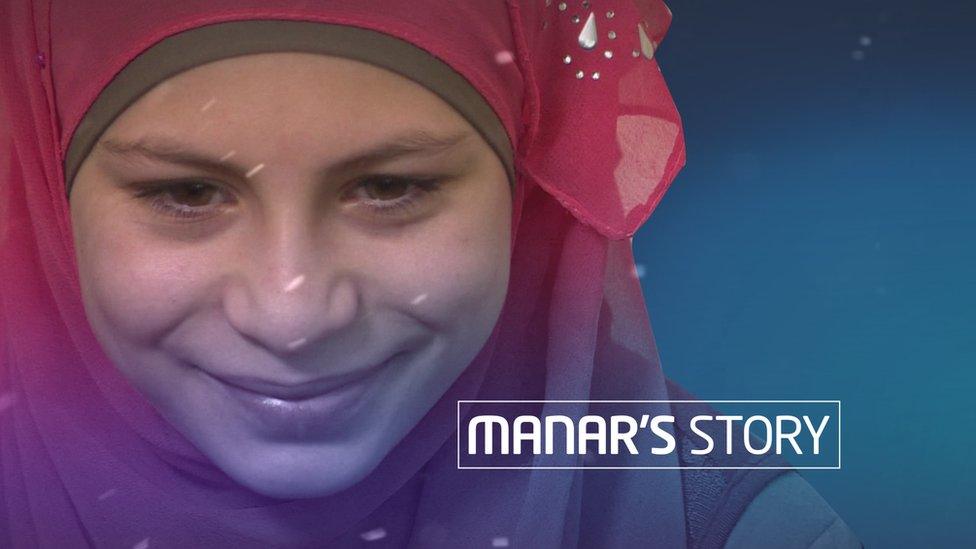
- Published20 April 2015
